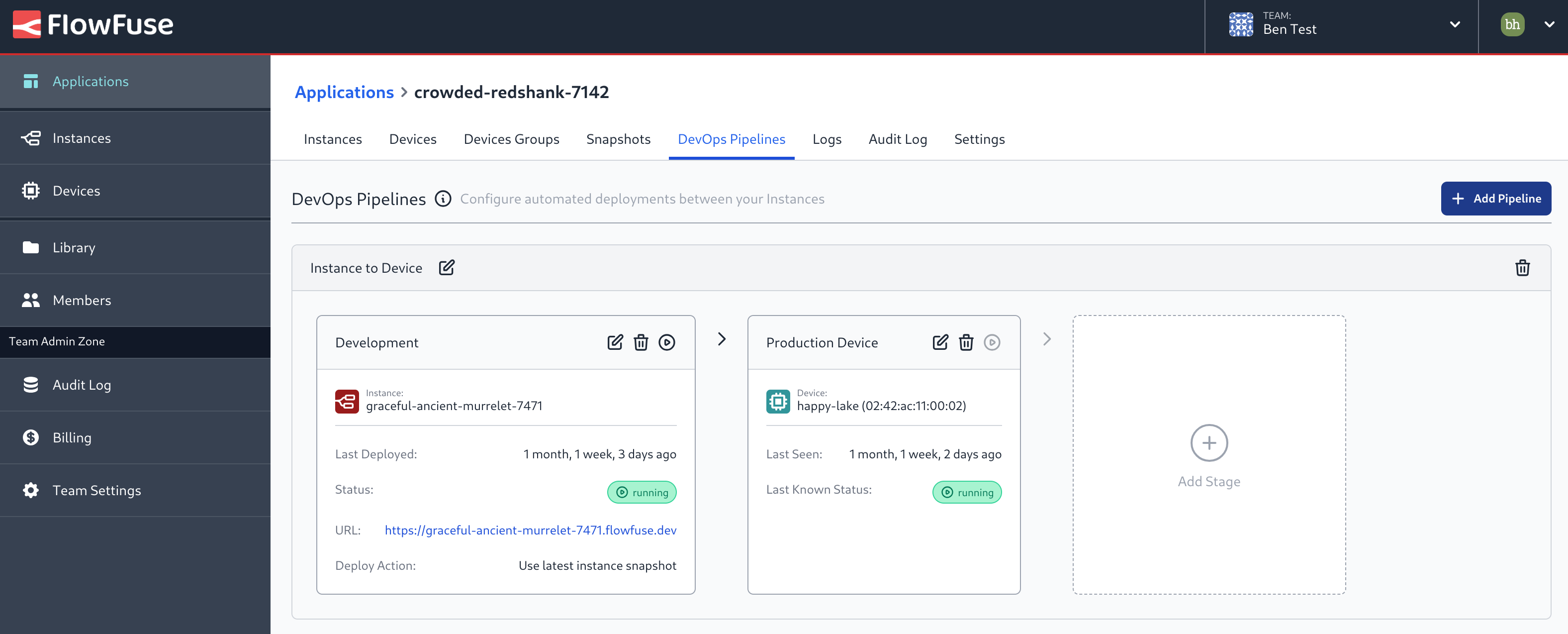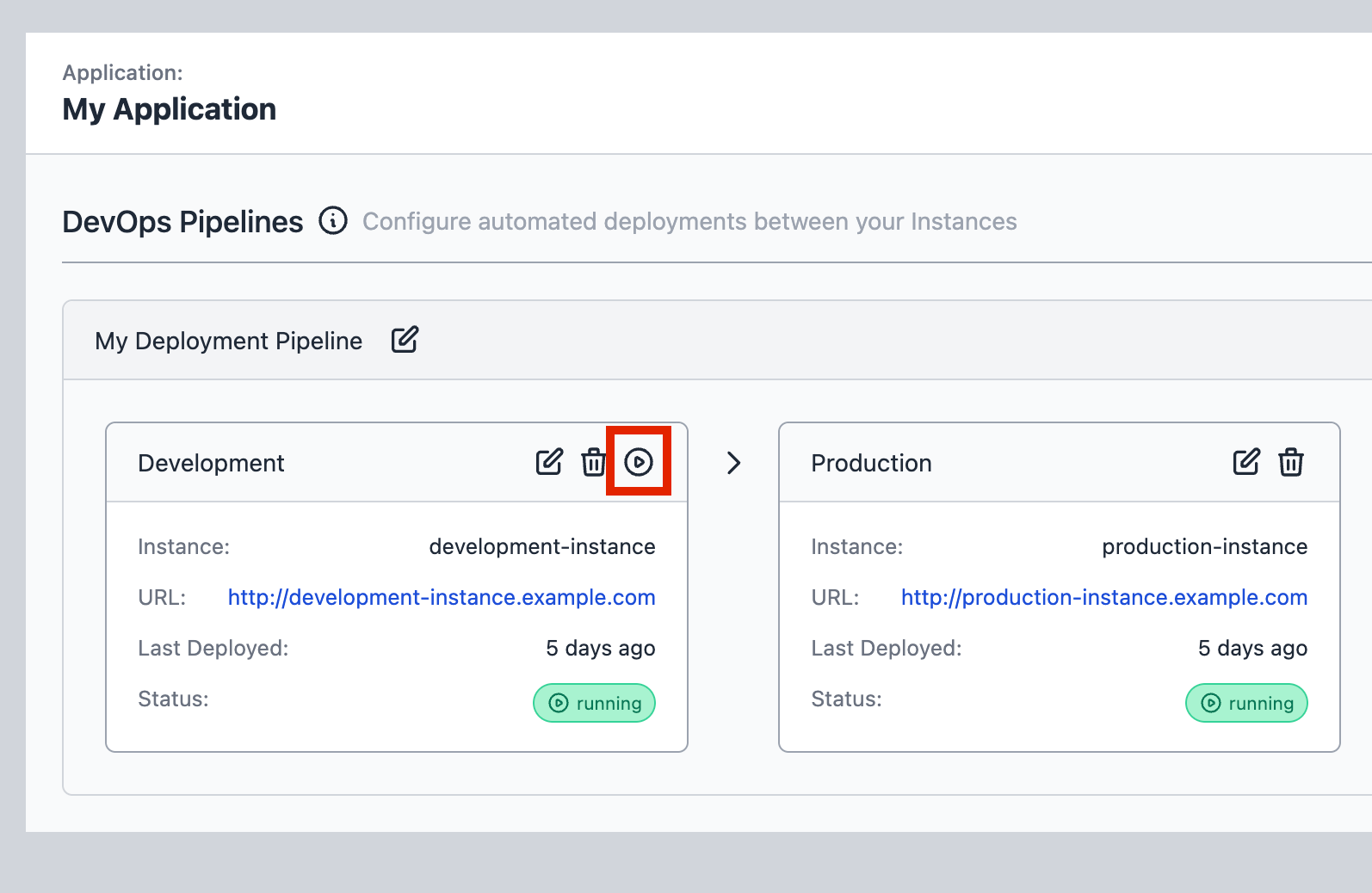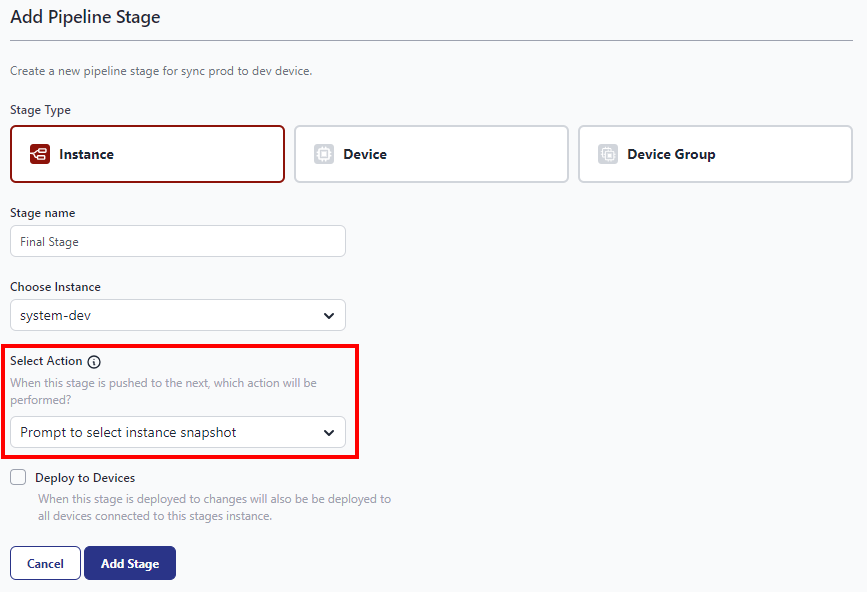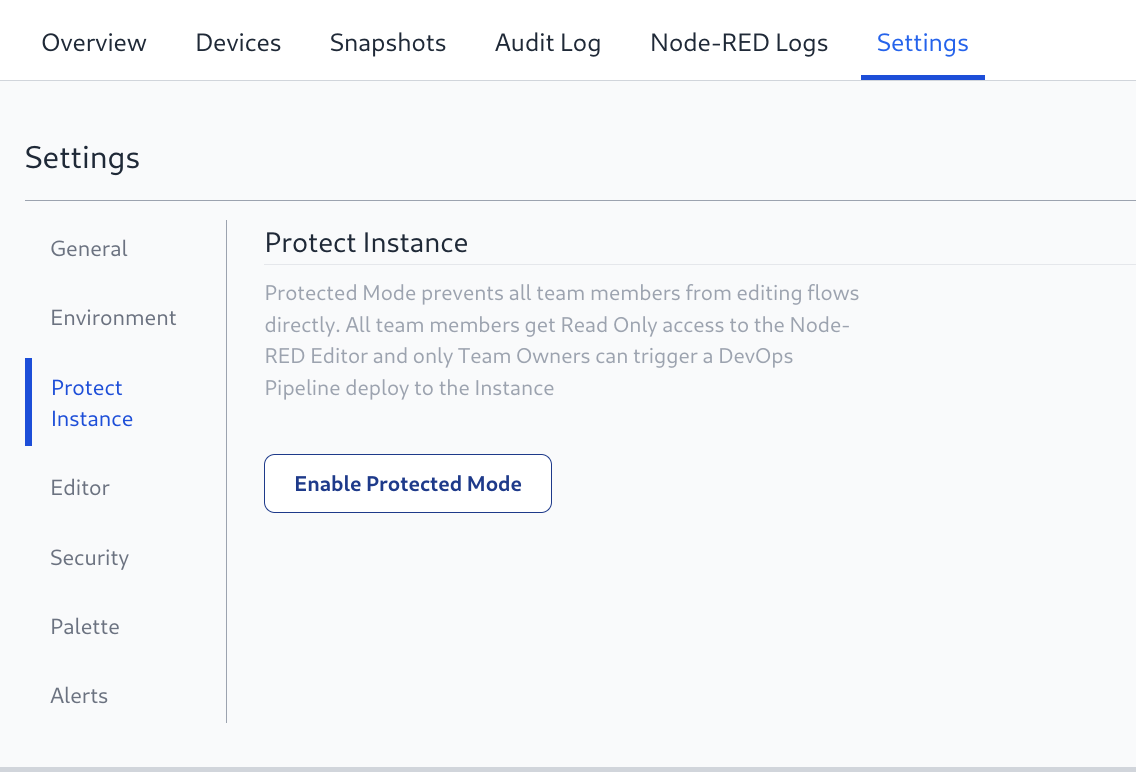- docs
- FlowFuse User Manuals
- Using FlowFuse
- Getting Started
- Static asset service
- Bill of Materials
- FlowFuse Concepts
- Changing the Stack
- Custom Hostnames
- Custom Node Packages
- Device Groups
- DevOps Pipelines
- Environment Variables
- FlowFuse Assistant
- FlowFuse File Nodes
- FlowFuse Project Nodes
- High Availability mode
- HTTP Access Tokens
- Instance Settings
- Logging
- persistent-context
- Shared Team Library
- Snapshots
- Team Broker
- Teams
- User Settings
- FlowFuse API
- Migrating a Node-RED project to FlowFuse
- Device Agent
- Device Agent
- FlowFuse Device Agent Introduction
- Quick Start
- Installation
- Register your Remote Instance
- Running the Agent
- Deploying your Flows
- Hardware Guides
- FlowFuse Cloud
- FlowFuse Cloud
- FlowFuse Self-Hosted
- Quick Start
- Installing FlowFuse
- Overview
- Configuring FlowFuse
- DNS Setup
- Docker install
- Docker from AWS Market Place
- Docker on Digital Ocean
- Add Project Stacks on Docker
- Docker Engine on Windows
- Email configuration
- First Run Setup
- FlowFuse File Storage
- Install FlowFuse on Kubernetes
- Upgrading FlowFuse
- Administering FlowFuse
- Administering FlowFuse
- Configuring Single Sign-On (SSO)
- Licensing
- Monitoring
- Telemetry
- User Management
- Support
- Community Support
- Premium Support
- Debugging Node-RED issues
- Contributing
- Contributing to FlowFuse
- Introduction
- Adding Template Settings
- API Design
- Creating debug stack containers
- Database migrations
- FlowFuse Architecture
- Local Install
- State Flows
- Device Editor
- Invite External Users
- User Login Flows
- Reset Password Flow
- Project Creation
- Instance states
- User Sign up Flow
- Team creation Flow
- Team Broker
- Working with Feature Flags
DevOps Pipelines
Navigation: Team > Application > Pipelines

In FlowFuse it is possible to configure a DevOps pipeline for your Node-RED instances. DevOps Pipelines allow you to easily deploy from one instance to another, most commonly used for having an unstable/experimental "Development" instance, and a more stable "Production" instance.
The pipeline then allows you to move your full flow and configuration along from "Development" to "Production" once it's ready.
You can configure this in FlowFuse from the Application screen. Note you will need to have created any Instances you wish to include in the Pipeline before being able to add them to a Pipeline.
Creating a Pipeline
- Select the Application you want to configure a Pipeline for.
- Ensure an instance is created for each stage you plan to create, e.g. development, QA, and production.
- For the instance you want to duplicate go to the Settings tab
- Click Duplicate Instance and provide the necessary details
- Select the "DevOps Pipelines" tab
- Select "Add Pipeline"
- Name your pipeline appropriately (this can be changed later)
- Select "Add Stage"
- Define your Stage's name, select the Stage Type and select an Action.
- Click "Add Stage"
- Repeat 5. - 7. for as many stages as you need.
See Pipeline Stage details below for more info.
Running a Pipeline Stage

Each stage currently is deployed manually. To do so, click the "play" icon on the source stage. In the example above, it will push from the "Development" stage to the "Production" stage.
Environment Variables - When pushing to a next stage, only your environment variable keys will be copied over. Values must be set on the next Stage's Instance explicitly.
Instance Settings - None of your Instance Settings will be copied over (e.g. Editor, Palette or Security Settings).
This ensures a split between your staging environments.
Pipeline Stage details
- Stages of a pipeline are executed from left to right.
- Actionable stages have a play button that will push from that stage to the next stage.
- Every stage, except the last one, is effectively a source stage that can be pulled from.
- Every stage, except the first one, is a target stage that can be pushed to.
- You cannot currently insert a Stage into the middle of a Pipeline, only at the end.
Stage Types
There are four types of stage to chose from:
- Instance - a single Node-RED instance.
- Device - a single remote instance.
- Device Group - a group of remote instances.
- Git Repository - a remote GitHub repository.
- This stage currently only supports:
- Repositories hosted on GitHub.com
- This stage currently only supports:
Actions

The action defines what happens when the stage is deployed. The available actions depend on the stage type selected for the stage. These are listed below.
Instance stage actions
-
Create new instance snapshot - A new snapshot of the instance will be created and pushed to the next stage.
-
Use latest instance snapshot - The latest existing snapshot of the instance will be pushed to the next stage.
-
Prompt to select instance snapshot - You will be prompted to choose which snapshot to push to the next stage.
Device stage action
-
Use active snapshot - The active snapshot of the device will be pushed to the next stage.
-
Use latest device snapshot - The latest snapshot of the device will be pushed to the next stage.
-
Prompt to select device snapshot - You will be prompted to choose which snapshot to push to the next stage.
Device Group stage
When a Device Group stage is triggered, it will push the current active snapshot of the group to the next stage.
Git Repository stage
Git Repository stages can be used to push and pull snapshots from a GitHub hosted repository. The stage can be configured with the branch to push/pull from as well as the filename to use for the snapshot.
If a filename is not configured, it will generate the filename when pushing to the repository based on the name of Instance, Device or Device Group that provided the snapshot. The provided filename can include directory structures, allowing the snapshot to be stored in a subdirectory of the repository.
When pulling from a repository, if the stage has not previously been used to push to the repository, the filename is a required property.
It is also possible to configure the stage with different branches for the push and pull actions. This enables a GitHub-based review process as part of the pipeline; using a Pull Request process to review and approve the changes before merging between the two branches.
Deploy to Devices
This option is only applicable when the Stage Type is an Instance.
When a pipeline stage with this action is deployed to, the same snapshot will be deployed to all devices connected to the defined instance.
Protected Instances
It is now possible to mark an instance as Protected. This means that all team members (including Owners) only have Read Only access to the Node-RED Editor and updates to the flows can only be made by a Team Owner running a DevOps pipeline that targets the instance.
Protected mode is activated under Instance > Settings > Protect Instance

A Protected Instance will be marked by a status badge next to it's running state. Click on this badge will take you to the Settings page.
